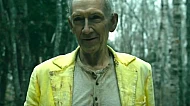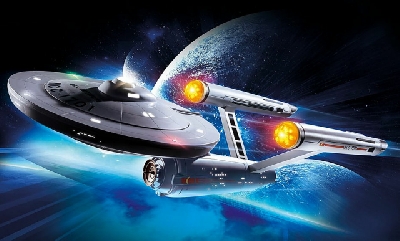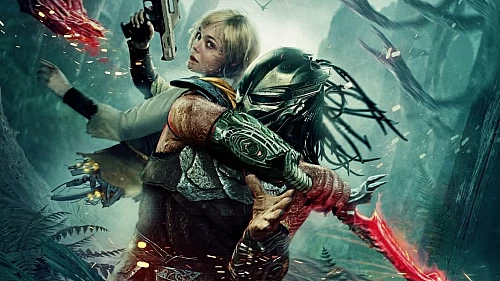In the golden age of science fiction, the far-fetched depictions of future technology offered a captivating glimpse of what could be possible. Whether it was Star Trek's universal translator, Back to the Future's hoverboard, or Minority Report's personalised ads, these wild ideas were merely speculative at the time. Fast forward a few decades, and we've astonishingly materialised some of these sci-fi dreams into everyday reality. Let's explore these unexpected transformations.
Speech Recognition and Universal Translators: From Star Trek to Siri
The first Star Trek series was truly ahead of its time, most notably through the introduction of the 'universal translator'. This device could interpret virtually any language, making interstellar communication a breeze.
Fast forward to the 21st century, and we now have virtual assistants like Siri and Google Assistant, which not only recognise speech but also provide real-time translations in myriad languages.
Hoverboards: From Back to the Future to Real Life
In the 1985 film 'Back to the Future Part II', Marty McFly's hoverboard was a revolutionary concept, defying gravity and leaving audiences in awe. In recent years, this captivating technology has turned from fantasy to reality.
Although today's hoverboards may not exactly levitate, self-balancing scooters have undoubtedly delivered the fun and excitement once envisioned by the movie.
Personalised Advertising: From Minority Report to Tailored Ads
In the movie 'Minority Report,' personalised advertising was used to a somewhat eerie extent. Digital billboards could identify individuals and display custom-tailored ads based on their preferences. While we aren't quite there yet, online targeted advertising increasingly uses sophisticated algorithms to tailor ads to individual users' interests.
Futuristic Payment Methods: Cashless Transactions and More
While films like 'In Time' envisioned a future where time was the primary currency, reality has taken a somewhat different, yet equally intriguing path. With the advent of digital payment systems and e-wallets, cash is steadily being replaced by more convenient, fast, and secure payment methods.
One such innovative payment method that seemed far-fetched a few years ago but is now very much a reality is MuchBetter. It's an award-winning eWallet app that allows swift, secure transactions, widely accepted by brick-and-mortar merchants and online gambling platforms. You can find brilliant examples of casinos that accept MuchBetter on Casinotop3.com. With such seamless payment methods, the once fascinating future of finance depicted in films is now an integral part of our lives.
Artificial Intelligence: From 2001: A Space Odyssey to Modern AI
'2001: A Space Odyssey' introduced us to HAL 9000, an AI system with capabilities far beyond our comprehension at the time. Fast forward to today, and AI systems are being incorporated into our daily lives, from virtual assistants to autonomous vehicles.
2023 has truly been the year of AI, with highly intelligent chatbots being launched and revolutionising every aspect of the internet. Cnet.com have compiled a list of the most useful ones today, but we expect more to come in the near future. It's remarkable how reality has caught up with what once was pure science fiction.
Virtual and Augmented Reality: From The Matrix to Modern VR/AR
'The Matrix' astounded audiences with its concept of a fully immersive virtual world indistinguishable from reality. Today, we have VR headsets and AR technologies that, while not as extensive as The Matrix, offer incredibly immersive experiences, blurring the lines between virtual and real.
Conclusion: The Future is Now
In retrospect, many of the technologies that were once mere flights of fancy in science fiction are now an essential part of our reality. While we may not have colonised Mars or have warp drive capabilities (yet!), innovations like speech recognition, AI, hoverboards and personalised advertising are testimony to our staggering progress. It's fascinating to imagine what the next few decades of scientific and technological advancement might bring us, as the boundary between sci-fi dreams and real-world technology continues to blur.

Stranger Things Season 5 Episode 7 suffers big drop in ratings ahead of the series finale!
Season 5 saw a sharp drop in ratings at the conclusion of Episode 7 – The Bridge, with many fans disappointed by drawn-out scenes and questionable writing.

Weta Workshop share King Kong concept art to commemorate film's 20th anniversary!
Take a look back at some awesome early artwork created for Peter Jackson's iconic King Kong movie!

Disney just signed a deal with OpenAI to let Sora curate videos using Star Wars, Marvel, Pixar & other Disney characters.
Disney have made headlines by partnering with OpenAI to let the platform have access to Disney properties and characters from Star Wars, Marvel, Pixar and more.

FROM Season 4 is aiming for an early 2026 release date!
The mind-bending sci-fi thriller FROM ended season 3 on some major cliffhangers. A fourth season is on the way early next year!

Lights, Drama, Action! Paramount launch aggressive bid to take Warner Bros. away from Netflix!
Paramount have made a big swing, offering $108 billion for the acquisition of Warner Bros. and are now going to WBD shareholders to sway the vote!




